
Overview
This article presents a systematic approach for effective search engine optimization (SEO) analysis, underscoring the critical importance of preparation, data collection, and ongoing adjustments to elevate website performance. By defining clear goals and utilizing essential tools, one can continuously monitor results, thereby enhancing visibility, driving organic traffic, and ultimately boosting conversion rates. These detailed steps collectively empower website owners to refine their strategies and achieve measurable outcomes.
Introduction
In the fast-paced digital landscape, mastering search engine optimization (SEO) analysis is essential for businesses aiming to thrive online. This comprehensive guide unveils five critical steps that not only enhance a website's visibility but also drive organic traffic and boost conversion rates. Yet, the challenge lies in effectively navigating the complexities of SEO data and translating insights into actionable strategies. How can businesses ensure they are not merely keeping pace with competitors but are setting the standard in their industry?
Understand the Importance of SEO Analysis
SEO evaluation stands as a pivotal component of any digital marketing strategy. It entails a thorough search engine optimization analysis of your website's performance in search engines, pinpointing areas ripe for enhancement. Recognizing the critical nature of SEO analysis empowers you to:
- Enhance Visibility: An optimized site secures higher rankings in search results, facilitating easier discovery by potential customers.
- Drive Organic Traffic: Elevating your rankings through search engine optimization analysis correlates with a surge in organic traffic, which frequently proves more cost-effective than paid advertising.
- Boost Conversion Rates: By performing a search engine optimization analysis to refine your site for search engines, you simultaneously enhance user experience, potentially resulting in elevated conversion rates.
- Stay Competitive: Consistent search engine optimization analysis equips you to stay abreast of competitors and adjust to evolving market dynamics.
In conclusion, SEO evaluation transcends mere ranking enhancement; it embodies the development of a that aligns seamlessly with your business objectives.
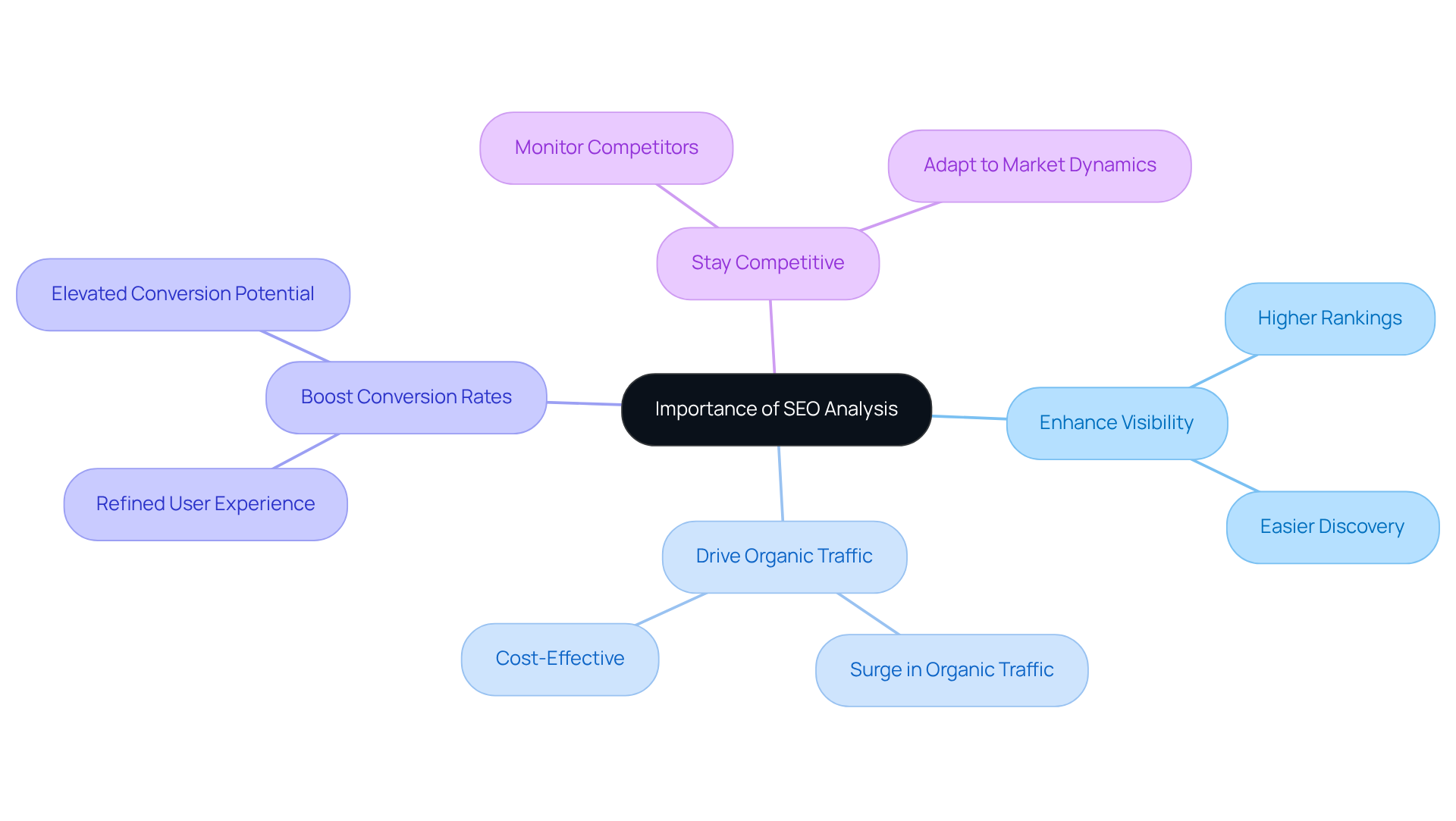
Prepare for Your SEO Analysis
Thorough preparation is essential before embarking on your search engine optimization analysis. To ensure a successful process, follow these steps:
- Define Your Goals: Clearly articulate your objectives for the SEO evaluation. Whether your aim is to increase traffic, improve rankings, or enhance user engagement, specific goals will steer your efforts. Industry leaders assert that "successful goal-setting is foundational for effective SEO strategies."
- Gather Necessary Tools: Equip yourself with essential SEO tools such as Google Analytics, SEMrush, Ahrefs, or Moz. These platforms provide invaluable insights and data evaluation features, enabling you to monitor results and identify areas for improvement. Experts highlight that utilizing the right tools can significantly enhance the accuracy of your analysis. Notably, 70% of marketers affirm that SEO generates more sales than PPC, underscoring the critical role of these tools.
- Collect Baseline Data: Document your current SEO effectiveness metrics, including organic traffic, bounce rates, and conversion rates. Establishing this baseline is crucial for measuring future improvements. Research indicates that businesses tracking their metrics effectively can achieve a 14.6% conversion rate from organic leads, emphasizing the importance of this step.
- Identify Key Competitors: Analyze your primary competitors to understand their SEO strategies and performance. This research can unveil for your optimization efforts. Notably, 70% of marketers confirm that comprehending competitor strategies is vital for refining their own SEO tactics.
By preparing meticulously, you lay the groundwork for a successful search engine optimization analysis, which paves the way for substantial enhancements in your digital marketing endeavors.
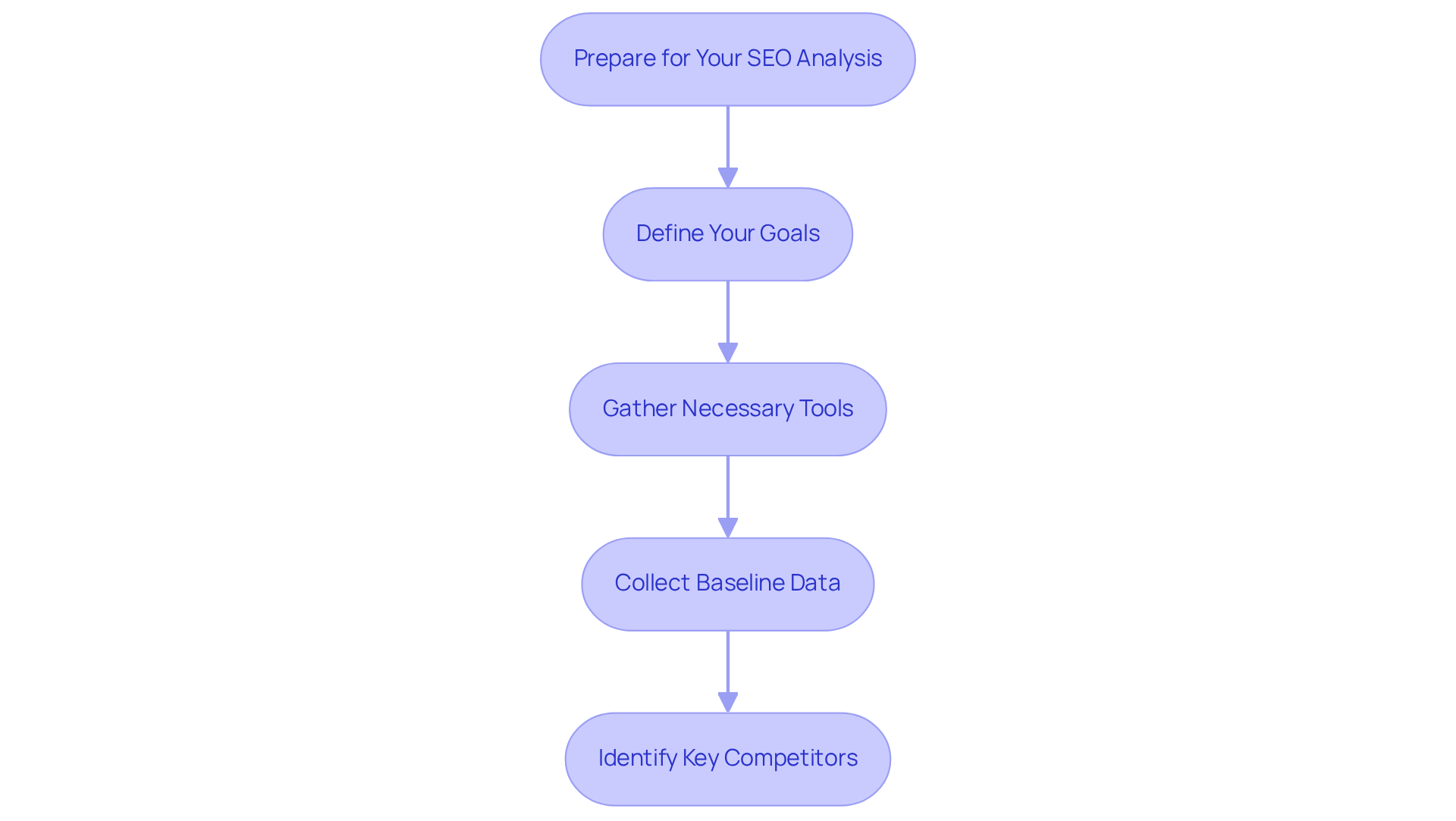
Conduct the SEO Analysis Using Key Tools
Now that you are prepared, it is time to conduct your . Follow these steps to ensure a thorough evaluation:
- Perform a Site Audit: Utilize tools such as SEMrush or Ahrefs to conduct a comprehensive site audit. This process will help you identify technical issues, broken links, and areas ripe for improvement.
- Analyze Keyword Performance: Examine which keywords are driving traffic to your site. Leverage Google Analytics and keyword tracking tools to assess their effectiveness and uncover new opportunities.
- Evaluate On-Page SEO: Review your website's on-page elements, including title tags, meta descriptions, headers, and content. Ensure these elements are optimized for your target keywords to enhance visibility.
- Assess Backlink Profile: Analyze your backlink profile using tools like Moz or Ahrefs. Identify high-quality backlinks and pinpoint areas where you can strengthen your link-building strategy.
- Monitor Competitor Performance: Employ tools to compare your SEO performance against that of your competitors. Recognizing their strengths and weaknesses will inform your strategic approach.
By systematically performing a search engine optimization analysis with these tools, you will gather valuable insights that will significantly inform your optimization efforts.
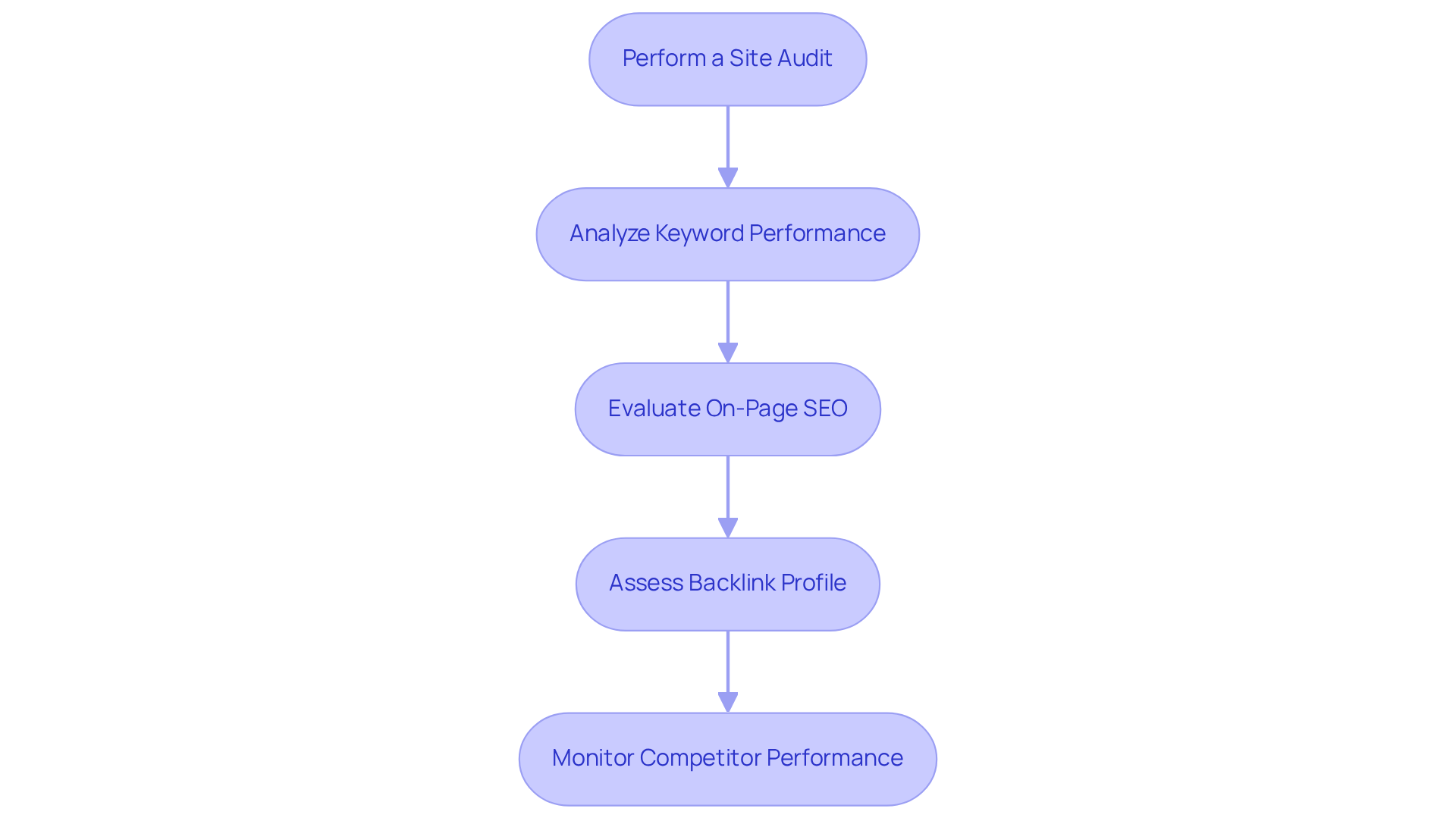
Analyze and Interpret Your SEO Data
Once you have collected your SEO data, the next step is to perform a search engine optimization analysis to interpret it effectively. Here’s how:
- Identify Trends: Begin by identifying patterns in your data over time. Are there specific keywords or pages that consistently perform well or poorly? Understanding these trends can significantly enhance your strategies, much like how Parah Group identifies .
- Evaluate User Behavior: Analyze metrics such as bounce rates, time on page, and conversion rates to gain insights into user interactions with your site. Elevated bounce rates may signal content that fails to meet user expectations. Parah Group emphasizes the importance of user behavior evaluation within their CRO strategies to boost profitability.
- Compare Against Goals: Assess your current results against the objectives established during the preparation phase. Are you on track to meet your targets? This evaluation is vital for ensuring that your optimization efforts align with your business growth aspirations, akin to Parah Group's commitment to sustainable growth.
- Prioritize Issues: Based on your analysis, prioritize the issues that require attention. Concentrate on high-impact areas that can lead to substantial performance improvements. Parah Group's case studies illustrate how focusing on the right strategies can drive significant revenue growth for DTC brands.
- Document Findings: Maintain a record of your insights and conclusions. This documentation will serve as a valuable resource for future reference and planning adjustments. Just as Parah Group fosters a culture of continuous learning and innovation, documenting your findings will empower you to stay ahead in the competitive landscape.
By conducting a search engine optimization analysis and thoroughly examining your SEO data, you can make informed decisions that enhance your optimization efforts, reflecting the proven methods employed by Parah Group to elevate DTC brand profitability.
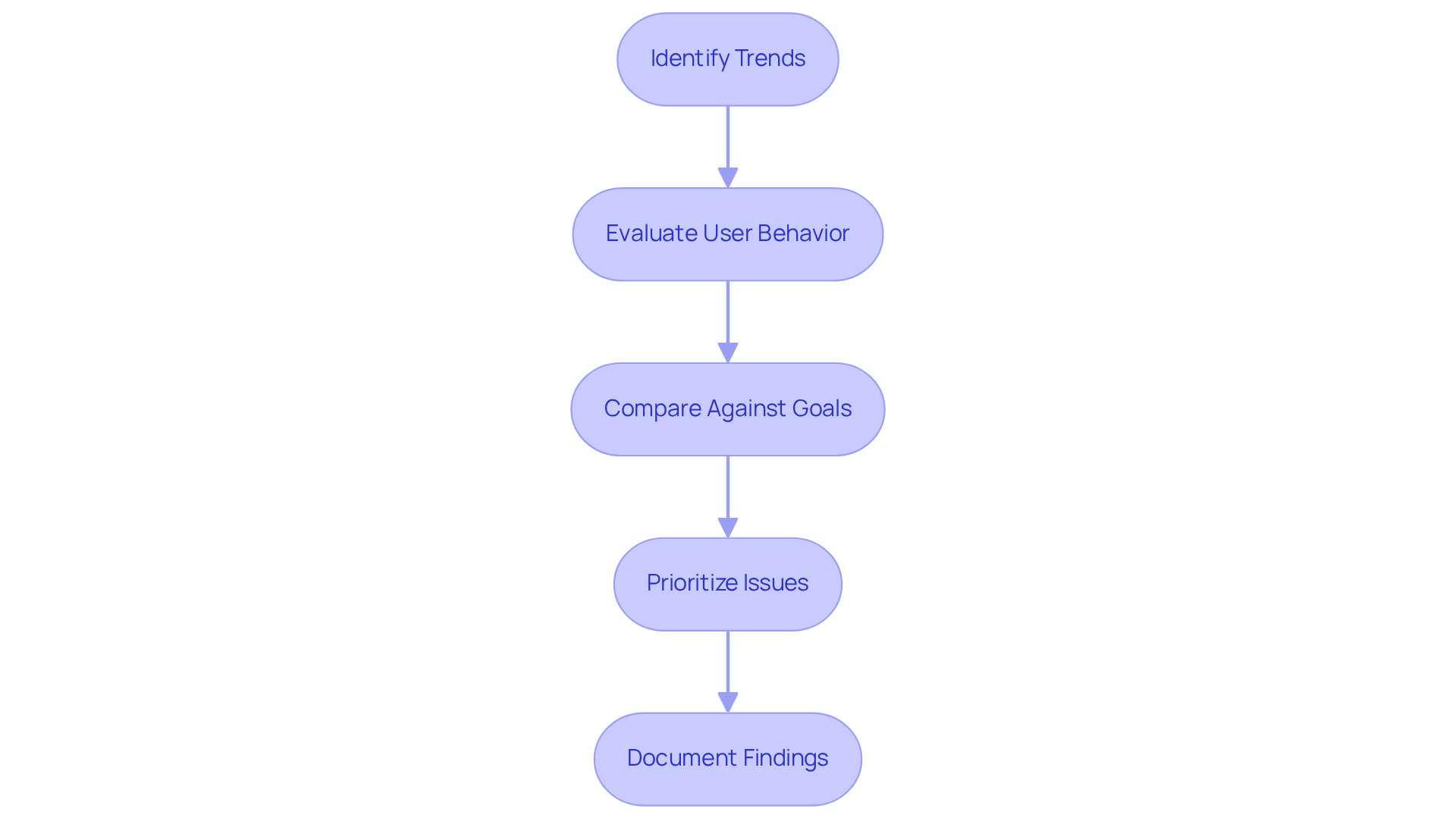
Implement Changes and Monitor Results
After performing a search engine optimization analysis of your SEO data, it is crucial to implement changes and monitor the results effectively. Follow these steps:
- Make Necessary Adjustments: Based on your analysis, implement changes to your website's content, structure, and SEO strategies. This may include optimizing keywords, improving site speed, or enhancing user experience.
- Set Up Tracking: Utilize Google Analytics and other tracking tools to monitor the impact of your changes. Establish specific KPIs to measure success, such as increased organic traffic or improved conversion rates.
- Conduct A/B Testing: Experiment with various approaches to determine what is most effective. For instance, test different headlines or calls to action to identify which drives more conversions.
- Review Regularly: Schedule regular reviews of your SEO performance to assess the effectiveness of your changes. This practice will help you stay agile and in user behavior or search engine algorithms.
- Iterate and Improve: Remember, SEO is an ongoing process. Consistently enhance your strategies based on data and insights to ensure sustained growth and development.
By implementing these changes and monitoring results, you can create a dynamic search engine optimization analysis that evolves with your business needs.
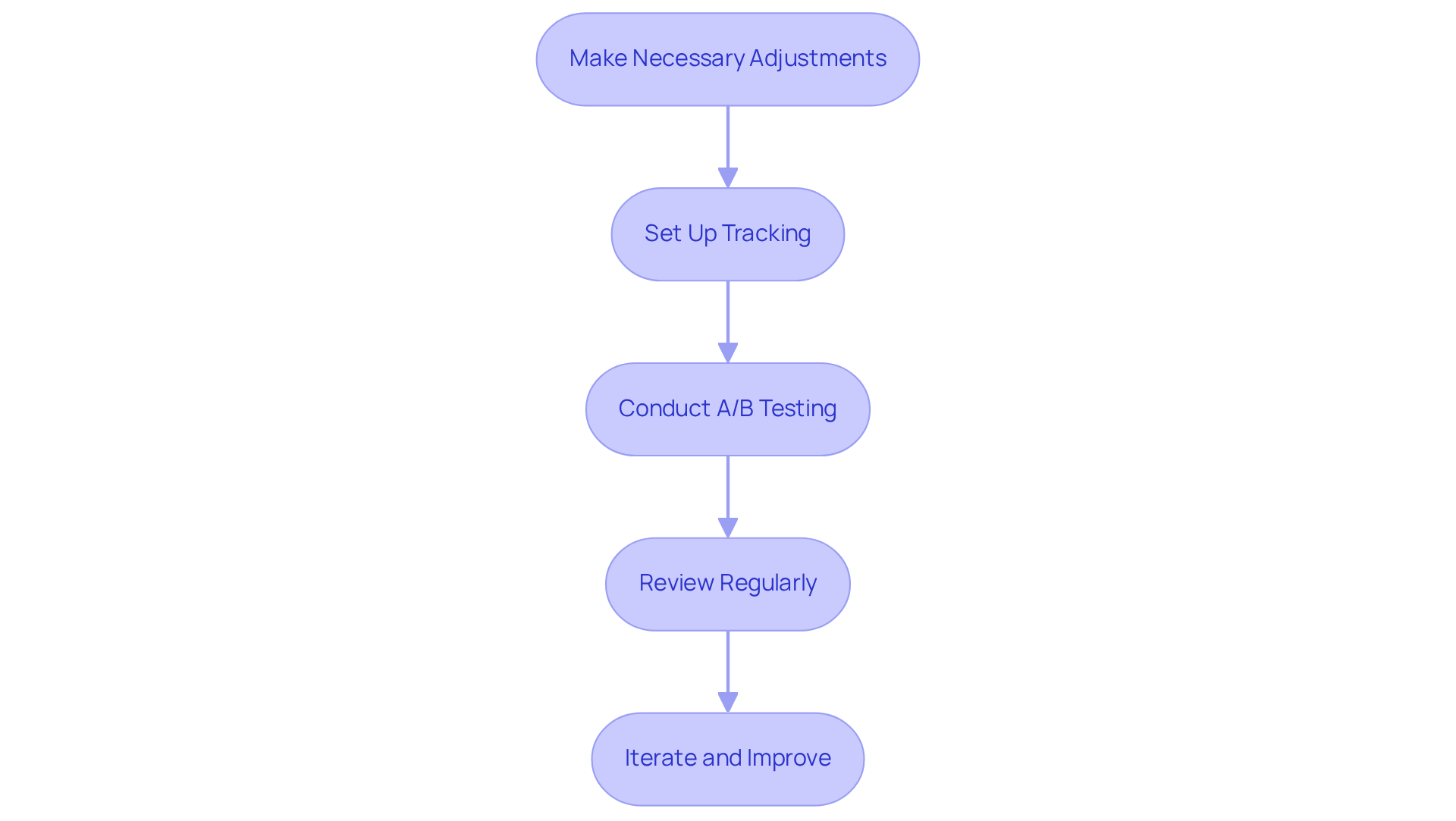
Conclusion
Effective search engine optimization analysis transcends mere task execution; it stands as a strategic necessity for any business aspiring to thrive in the digital landscape. Recognizing the importance of SEO analysis enables organizations to enhance visibility, drive organic traffic, boost conversion rates, and sustain a competitive edge. This comprehensive approach transforms SEO from a technical chore into a dynamic growth strategy that aligns seamlessly with overarching business objectives.
This article delineates a systematic five-step process for conducting an SEO analysis:
- Adequately preparing
- Utilizing key tools
- Analyzing and interpreting data
- Implementing changes
- Monitoring results
Each step is meticulously designed to build upon the previous one, ensuring that businesses not only gather insights but also act on them effectively. From defining clear goals to leveraging powerful SEO tools and tracking performance, these steps establish a robust framework for continuous improvement.
Ultimately, the significance of SEO analysis cannot be overstated. It empowers businesses to make informed decisions, adapt to market shifts, and foster sustainable growth. By embracing a proactive approach to SEO, companies can unlock their full potential in the digital arena, ensuring they remain relevant and successful in an ever-evolving landscape. Taking decisive action today to refine SEO strategies will yield long-term benefits that resonate far beyond mere rankings.
Frequently Asked Questions
What is the importance of SEO analysis?
SEO analysis is crucial for enhancing website visibility, driving organic traffic, boosting conversion rates, and staying competitive in the digital market.
How does SEO analysis enhance visibility?
An optimized site achieves higher rankings in search results, making it easier for potential customers to discover the website.
What effect does SEO analysis have on organic traffic?
Improving rankings through SEO analysis leads to an increase in organic traffic, which is often more cost-effective than paid advertising.
How can SEO analysis boost conversion rates?
By refining a site for search engines, SEO analysis enhances user experience, which can lead to higher conversion rates.
Why is it important to stay competitive with SEO analysis?
Regular SEO analysis helps businesses keep up with competitors and adapt to changing market dynamics.
What steps should be taken to prepare for an SEO analysis?
Key preparation steps include defining your goals, gathering necessary tools, collecting baseline data, and identifying key competitors.
What should I define before conducting an SEO analysis?
Clearly articulate your objectives, such as increasing traffic, improving rankings, or enhancing user engagement.
What tools are essential for effective SEO analysis?
Essential tools include Google Analytics, SEMrush, Ahrefs, and Moz, which provide insights and data evaluation features.
Why is collecting baseline data important in SEO analysis?
Documenting current SEO metrics, such as organic traffic and conversion rates, establishes a baseline for measuring future improvements.
How can analyzing competitors assist in SEO efforts?
Understanding competitors' SEO strategies can reveal valuable insights and opportunities for your own optimization efforts.
FAQs











